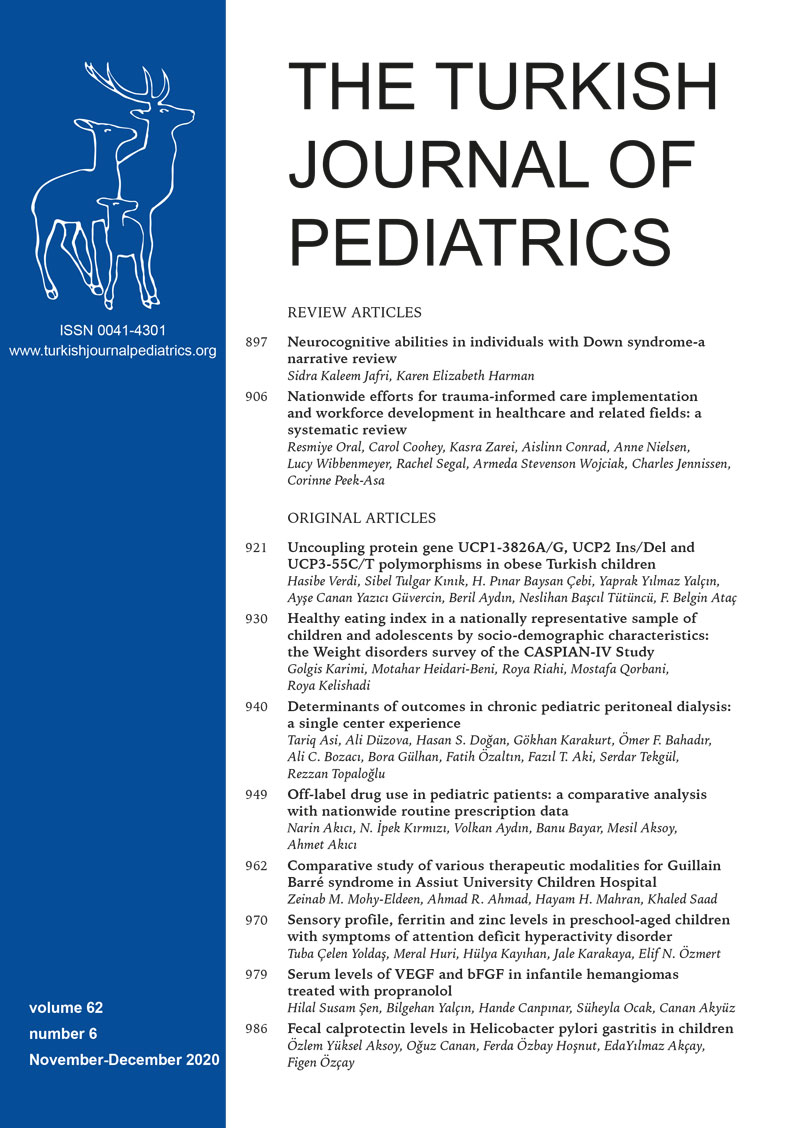Abstract
Background. Idiopathic facial paralysis or Bell`s palsy is the most common type of peripheral facial paralysis. Children with Bell`s palsy is an uneasy situation for the family and physician with questions about the etiology, treatment options and the healing process. Here, we aimed to compare the epidemiologic features and prognostic factors of patients with Bell`s palsy aged < 18 years.
Methods. Records of patients with Bell`s palsy who were admitted to our clinic between January 2008 and December 2017 were evaluated.
Results. Forty-seven patients with Bell`s palsy were included to this study. The patients` ages varied between 7 and 17 (14.7±2.5) years. At the end of at least 6 months of follow-up, 32 (68.1%) of the patients presented with House Brackmann (HB) grade 1 facial paralysis, while 12 (25.5%) of them had grade 2 and 3 (6.4%) of them had grade 3 facial paralysis. Mean neutrophil-to-lymphocyte ratio (NLR) in patients with advanced grades (grade 4, 5, 6) was higher, compared to that of patients with grade 2 and 3 (4.10 ± 1.06 vs 1.34 ± 1.02 (p < 0.001).
Conclusions. In our study, the response rate to treatment was high. In differential diagnosis, congenital anomalies, malignancy, trauma, middle ear infection and surgery should be considered. In addition, NLR at admission can be considered as a prognostic factor.
Keywords: Bell palsy, children, inflammation, neutrophil-to-lymphocyte ratio, neutrophils, prognosis
Copyright and license
Copyright © 2020 The Author(s). This is an open access article distributed under the Creative Commons Attribution License (CC BY), which permits unrestricted use, distribution, and reproduction in any medium or format, provided the original work is properly cited.














